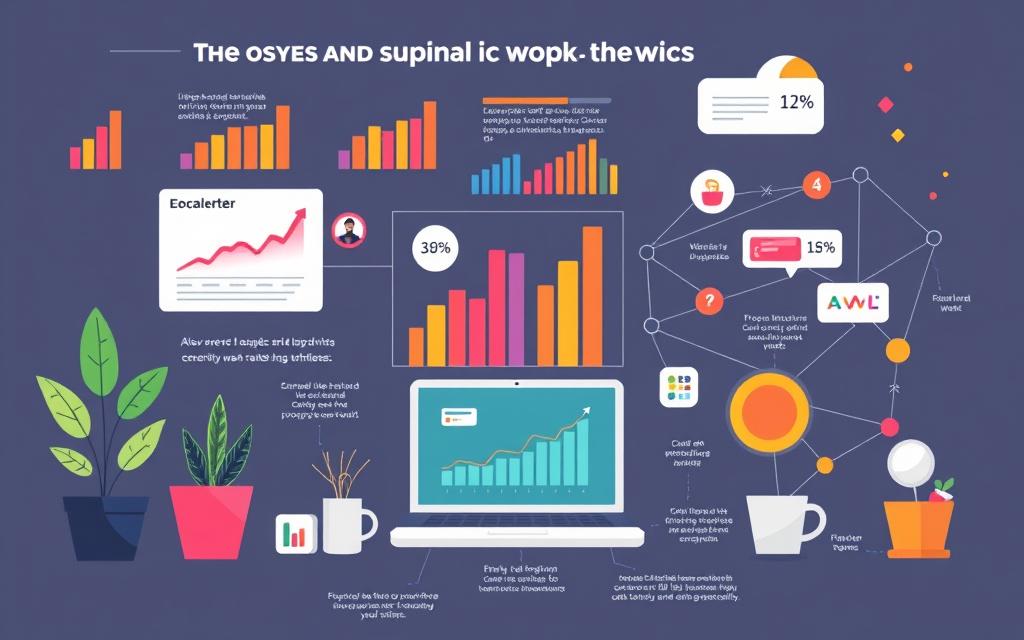In today’s competitive job market, employee retention is more crucial than ever. A recent study indicates that a staggering 66 percent of employees actively consider new employee benefits offerings before making the decision to stay with or leave their current employer. This emphasizes the need for companies to prioritize attractive employee perks that not only draw in top talent but encourage them to remain committed to their organization.
Organizations that experienced higher turnover rates have begun responding by introducing new or enhanced flexibility options. According to research from SHRM, 42 percent of such organizations adapted their policies to incorporate remote work capabilities. Moreover, as services like paid family leave and educational assistance programs gain traction, companies like Chipotle Mexican Grill are observing significant improvements in their retention rates.
Ultimately, while competitive pay and health care remain foundational, a diverse array of job perks is necessary to foster lasting loyalty in today’s labor landscape. Companies that strategically enhance their retention tools can create a positive workplace culture that promotes engagement and satisfaction among their workforce.
Understanding the Importance of Employee Retention
Employee retention plays a crucial role in the overall success of any organization. The impact of employee turnover can be profound, affecting not only the company’s finances but also its workplace culture and customer relationships. In recent years, significant trends have emerged, underscoring the urgency for businesses to invest in retention strategies.
The impact of employee turnover on business
Employee turnover can incur hefty costs, often amounting to at least one-third of a salaried employee’s annual income. The financial implications vary, especially when labor market demand is high, leading to costs that can exceed two times an employee’s annual salary. High turnover rates prompt a rise in hiring and recruitment expenses, which directly affect the business impact of maintaining an effective workforce.
Organizations often face operational inefficiencies and loss of institutional knowledge as employees depart. This situation can disrupt team dynamics, reduce employee morale, and ultimately detract from overall productivity. Investing in retention strategies is essential to mitigate these issues and foster a stable work environment that promotes long-term success.
Recent trends in employee resignations
The landscape of employee resignations has transformed, particularly influenced by the pandemic. Reports indicate that employee resignation rates have surged nearly 20% compared to pre-pandemic levels, creating a challenge for employers striving to maintain a committed workforce. Key reasons for employee turnover include low pay, insufficient opportunities for advancement, and feelings of disrespect within the workplace.
With job openings at an all-time high—nearly 9.6 million available positions—retaining valuable talent becomes imperative. Companies need to reassess and adapt their employee retention strategies, focusing on leadership alignment, employee development, and succession planning to effectively combat turnover rates.
| Year | Global Growth Rate | Employee Resignation Rates | Annual Salary Replacement Cost |
|---|---|---|---|
| 2021 | 6% | Baseline | 1/3 of employee’s annual salary |
| 2022 | 3.3% | 20% increase | Up to 2 times employee’s annual salary |
| 2023 (Project) | 2.6% | 20% higher than pre-pandemic | 1/2 to 2 times employee’s annual salary |
| 2024 (Project) | 2.4% | Continued emphasis on retention | Varies based on labor demand |
Key Factors Leading to Employee Turnover
Employee turnover remains a significant concern for many businesses. Various turnover factors play a role in why employees choose to leave their jobs. Addressing these issues can lead to better retention rates and improved workplace environments.
Low pay and lack of benefits
Low pay consistently ranks as a top reason employees decide to leave their positions. According to research, 63% of employees cited insufficient compensation as a primary reason for resigning. When businesses do not offer competitive salaries or adequate benefits, workers often feel undervalued, prompting them to seek better-paying opportunities elsewhere.
Lack of opportunities for advancement
Career progression is crucial for job satisfaction, with many employees prioritizing advancement within their current organization. A staggering 63% of individuals leave their jobs due to the absence of growth prospects. When companies fail to provide pathways for employee advancement, it can lead to frustration and ultimately, turnover.
Workplace culture and respect
Workplace culture significantly impacts employee retention. A supportive environment infused with employee respect fosters loyalty. Recent studies indicate that 57% of employees depart from their jobs because they feel undervalued or disrespected. Teams thrive in culture-focused workplaces that emphasize collaboration and encouragement.
| Turnover Factor | Percentage of Employees Affected |
|---|---|
| Insufficient Compensation | 63% |
| Absence of Career Growth | 63% |
| Feeling Undervalued | 57% |
| Unhappiness with Work Hours | 33% |
Understanding these key factors allows organizations to effectively tackle retention challenges and foster a supportive workplace where employees feel valued and motivated to grow.
Core Benefits That Enhance Job Satisfaction
To drive job satisfaction, businesses must prioritize core benefits that resonate with employees. Health benefits serve as a cornerstone for attracting talent and retaining skilled professionals. In fact, 92% of workers consider health insurance a critical factor when evaluating job offers. This highlights the necessity for organizations to provide comprehensive health benefits that foster employee well-being.
Health benefits as a retention tool
With approximately 159 million Americans receiving employer-sponsored group health insurance, it’s clear that these plans are highly regarded. Health benefits contribute not only to the physical well-being of employees but also play a significant role in overall job satisfaction. Companies that invest in robust health insurance programs often see a reduction in turnover rates and an increase in employee engagement.
Retirement benefits and their importance
Retirement benefits rank highly among what employees seek, with 87% valuing them as essential. Unfortunately, only 54% of employers currently provide such benefits, creating a disconnect between employee expectations and reality. Implementing comprehensive retirement plans, such as a 401(k), can significantly enhance job satisfaction. These benefits encourage long-term commitment and loyalty from employees, ultimately benefiting the organization.
Flexible work arrangements for better work-life balance
The demand for flexible work options has surged in recent years. The Bureau of Labor Statistics reports that 27% of workers were fully remote in 2022, indicating a growing preference for work-life balance. Employees who have access to flexible work arrangements are not only more satisfied but also happier and more productive. Studies show that remote work leads to lower stress levels and higher productivity, further emphasizing the importance of providing such options to enhance employee well-being.
Employee Perks and Retention: Innovative Options
In a competitive job market, offering unique employee perks can greatly enhance retention rates while setting your company apart. Creative benefits appeal directly to employee needs, demonstrating commitment to their overall well-being. Innovative benefits such as pet insurance, wellness stipends, and childcare assistance resonate strongly, offering tangible support to staff members. These strategies are not just about attracting talent; they foster loyalty and engagement.
Unique employee benefits that set companies apart
Many organizations are now embracing innovative benefits designed to create a more supportive workplace. For instance, only 1 in 5 companies provide adoption assistance coverage, which can range from $15,000 to $40,000. American Express leads the way with reimbursement of up to $35,000 for employees involved in adoption or surrogacy for two children. This type of employee perk not only shows compassion but also enhances a company’s image as a family-friendly employer.
Health and wellness benefits are crucial players in retention strategies. According to surveys, 87% of employees consider these perks when deciding where to work. In addition, companies offering lactation support programs report a 94.2% employee retention rate, significantly higher than the national average of 59%. Such innovative benefits not only assist in maintaining a healthy workforce but also signal that the organization genuinely cares about its employees’ well-being.
Financial wellness programs and their effectiveness
Financial wellness programs have become particularly valuable in recent times. These initiatives provide employees access to financial planning resources and emergency funds, addressing financial stress that can affect job performance. Statistics show that 43% of employees who left their jobs in 2021 cited poor benefits as a key factor. By implementing financial wellness initiatives, organizations can actively work on retention strategies that resonate with their workforce.
The increasing demand for wellness perks is evident, as 37% of individuals have turned down job offers because of inadequate wellness programs. Companies integrating these benefits can substantially enhance employee satisfaction. Options like gym membership reimbursements, yoga classes, or nutritionist access provide a holistic approach to employee health, improving engagement while reducing stress and promoting higher retention rates.
The Role of Career Development and Educational Assistance
Investing in career development through educational assistance and employee training is essential for retaining talented professionals. A well-structured mentorship program can guide you in achieving your career goals, fostering greater engagement and commitment to the organization. Statistics reveal that 94% of employees would stay longer at a company that invests in their careers, highlighting the importance of dedicated resources for professional growth.
Investing in employee growth and training
Access to educational assistance can significantly affect your career trajectory. According to surveys, 94% of Workforce Edge users utilize their education benefits to enhance their opportunities for promotions and salary increases. Moreover, 53% of employees feel encouraged to remain at their jobs longer when they have access to professional development opportunities. Organizations that focus on employee training see a direct correlation between these initiatives and higher engagement levels. In fact, 87% of Workforce Edge users report being very or fairly engaged in their current roles.
Importance of mentorship and coaching programs
Mentorship programs can play a crucial role in your professional development. Research indicates that employees who have access to mentorship and coaching are more likely to feel aligned with their company’s goals. When 60% of employees express a preference for jobs with professional development opportunities over standard salary raises, it becomes clear that opportunities for growth significantly shape job satisfaction and retention. Incorporating these mentorship programs not only promotes a culture of continuous learning but also enhances overall job performance.
| Key Statistics | Percentage |
|---|---|
| Employees who stay longer if offered career investment | 94% |
| Employees using education benefits for promotion | 94% |
| Employees encouraged to stay due to development opportunities | 53% |
| Preference for jobs with training over salary raises | 60% |
| Employees feeling at a “dead end” | 45% |
How Wellness Programs Contribute to Employee Loyalty
Implementing wellness programs has the potential to significantly enhance employee loyalty. When organizations prioritize the well-being of their workforce, it not only fosters a strong bond between employees and employers but also generates positive outcomes for the company as a whole. Employees feel valued and appreciated, leading them to commit to their roles and the organization.
Mental health support as a retention strategy
Providing mental health support within wellness programs showcases a company’s dedication to employee welfare. Stress management programs can equip employees with tools to handle workplace pressures, reducing anxiety levels and enhancing workplace satisfaction. Statistics reveal that 87% of employees choose their employers based on the health and wellness programs available. Organizations that demonstrate a commitment to mental health may see higher retention rates. When employees know their mental well-being is prioritized, they are more likely to remain loyal to the company.
The benefits of physical wellness initiatives
Physical wellness initiatives, including fitness challenges and access to gym memberships, contribute to healthier lifestyles and greater job satisfaction. Engaging employees in group wellness activities promotes teamwork, creating a positive work environment. The presence of comprehensive physical wellness programs can reflect on employee behavior and productivity, ultimately benefiting the organization. Furthermore, 61% of employees claim to experience burnout, highlighting the need for proactive measures that engage and support them in maintaining a healthy work-life balance. In fact, 45% of employees in small and medium-sized businesses believe wellness programs would encourage them to stay longer with their employers.
| Statistic | Impact on Employee Loyalty |
|---|---|
| 87% of employees choose employers based on wellness programs | Higher satisfaction and retention rates |
| 67% of employees enjoy their jobs more with wellness offerings | Increased morale and productivity |
| 58% of millennials consider wellness programs essential when job searching | Attracting and retaining younger talent |
| 31% of workers report extreme stress at work | Need for mental health support initiatives |
| 45% of employees in small businesses would stay longer due to wellness programs | Improved retention strategies |
In summary, wellness programs focusing on mental health support and physical wellness significantly contribute to building employee loyalty. Organizations embracing these initiatives position themselves favorably in the competitive job market, while also cultivating a committed and satisfied workforce.
Conclusion
To foster a culture of employee retention, you must recognize that the integration of competitive benefits and innovative perks is vital. As evident from Gallup’s 2023 report, more than half of employees are on the lookout for new opportunities, indicating a pressing need for businesses to adapt. With turnover rates influenced by factors such as workplace loyalty, it’s important to create environments where employees feel valued and engaged.
Investing in comprehensive benefits packages that address the diverse needs of your workforce can significantly enhance employee satisfaction and retention. Organizations facing the consequences of the “Great Resignation” are realizing that the cost of replacing talent can range from six to nine months’ worth of an employee’s salary, emphasizing that nurturing existing talent is often more beneficial than hiring anew.
By prioritizing employee needs for benefits and perks that align with current trends and preferences, especially among younger generations, you can build a more loyal and dedicated workforce. Ultimately, a strong focus on employee retention not only improves morale but also drives organizational success, ensuring long-term viability in an increasingly competitive landscape.










